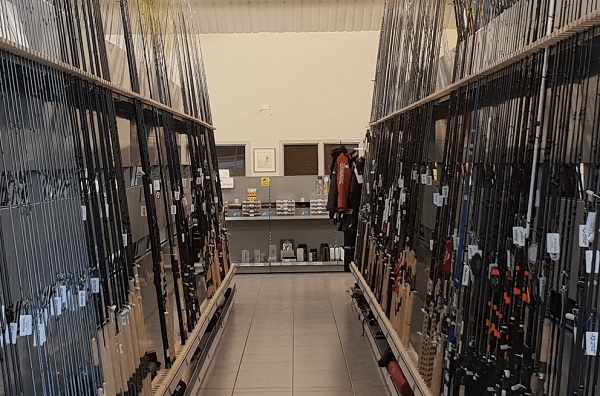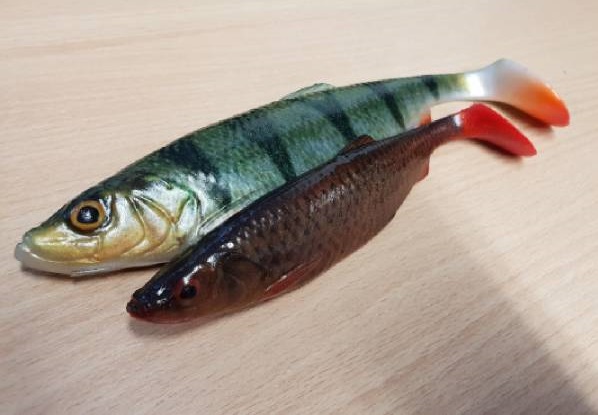So you’re in the market for a new spinning rod but you don’t know where to start. In this article, we breakdown all the key features that make up a spinning rod, to provide you with a better understanding of how the components of a spinning rod work together.

So before we start to look at all the new shiny rods on the rod racks, let’s ask a few questions first!
- – What species of fish will I be targeting?
- – What weight of lures am I looking to cast?
- – Am I fishing through heavy vegetation or heavy flowing water? Or are you fishing open still waters?
- – Do I need to present a lure at distance or am I fishing areas where tight, accurate casts are required?
All these questions are relevant to help you find the perfect tool for the job. Below we look at the main components that make up a spinning rod and explain their benefits.
What is rod action?
It’s a subject that anglers can become confused by and no wonder! What does it all mean? Well in this article, we will be going through the differences between the various rod actions available. So without further to do, let’s get straight into it.
The rod action itself is dictated by the bend the rod takes when pressure is applied to the rod tip. Below, the image shows the 3 main styles of rod action, each one of these has its advantages and disadvantages.
Let’s have a closer look!
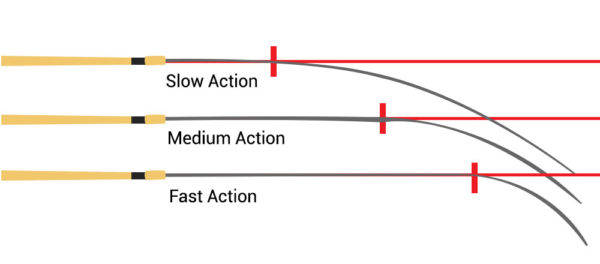
Slow Action
The top rod in the diagram has a slow action, also known as a progressive action. This rod action is when the rod bends through its whole entirety, also known as its parabolic state.
So what are the benefits of using a progressive/slow action rod you ask? Well, for starters, they’re great fish playing tools! Progressive action rods absorb more of the fight which minimises the chance of any hook pulls especially when targeting softer mouthed species.
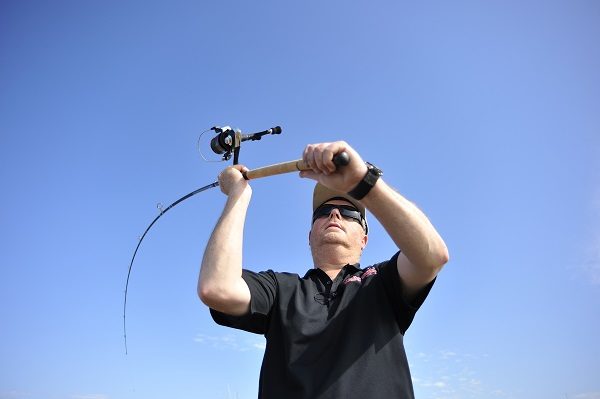
Notice how the full rod blank is bending through its entirety.
This style of rod is more suited to working lures like crankbaits e.g. Rapalas. For example, if you’re retrieving a crankbait that is working tight to the bottom, over rocky structure, progressive action rods unload a lot slower at the rod tip when working a lure, meaning the delay in the softer rod action (also known as the rods recovery time) allows you to bounce or deflect that lure away from snaggy structure more efficiently.
The other key benefit is that a progressive action rod allows a fish to take lures more confidently as the delay of the softer action allows the fish to take the lure without feeling that sudden resistance that a faster action rod would provide. However, more force is required to set the hooks during the strike.
Medium action rods
Medium or moderate action rods are when the action of the rod bends through the top half of the rod blank. Unlike soft action rods, medium action rods have a bit more backbone to them – meaning the bottom third of the rod blank is stiffer, while still maintaining a slightly forgiving top section. This gives you the best of both worlds of a progressive and a fast action rod.
These moderate action rods will provide increased casting distance as they compress quicker under load and will recover quicker than a progressive action rod will. This is due to less of the rod blank having to compress under load. They also still keep some of the absorption attributes of a slower action rod, which is great for using the rod to absorb hard lunges during the fight.
Fast action rods
Fast action rods are rods that only bend through the top third of the rod blank. They have a lot more backbone (power in the bottom two thirds of the rod blank) this is great for setting hooks, especially in hard mouthed predators. It is also ideal for bullying fish out of heavy vegetation and they provide far better sensitivity than moderate or slow action rods due to vibration/takes being identified by the rod tip quicker, unlike slower/progressive action rods that can absorb a lot of the initial take before it’s detected.
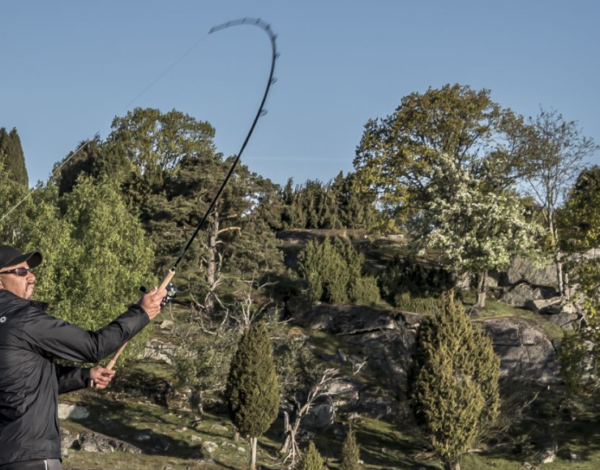
Casting distance can be greatly increased with the very fast compression time of the rod blank. However, fast action rods are not as forgiving as the other two actions we previously covered. Meaning, hook pulls can occur if you are new to using this style of rod.
Rod power
A rod’s power is measured in two ways, the casting weight of the rod and the line weight of the rod. Checking both of these will determine what rod is suited to your lure fishing application.
Casting weight
The casting weight of the rod will be highlighted on the rod blank itself in either grams or ounces. If a rod states it’s casting weight is 20 – 60 grams, then that rod will compress and perform optimally with any weights within that range, if however, you try to cast a lure under the stated casting weight, the rod won’t compress enough to cast the lure efficiently.
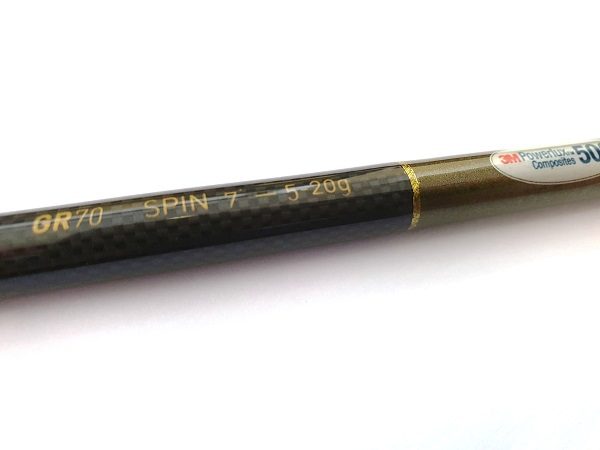
The casting weight is located on the rod blank.
If you use a lure above the rod’s casting weight, then the rod is overloaded during the cast and this will cause the rod to compress beyond its means and will affect casting performance significantly. Please note: Overloading a rod can decrease the lifetime of a rod as the rod blank will suffer from stress overtime and may result in the rod blank failing.
The line weight is the recommended breaking strain of line required for that rod. Again, these are predetermined by manufacturers to provide you with a rod that is well balanced and allows you to benefit from its optimum performance. Using a main line that is too heavy, will decrease casting distance significantly and using too light a line could result in the line failing as it’s not adequate enough for casting lures of a specific weight.
Who says it’s all about the length?
The length of a rod is vitally important; the rod length should be dictated on the species you’re targeting, venues that you’re fishing and the size of the lures you’re casting. Below, we have highlighted the benefits of various rod lengths.
The shorter the rod, the more casting accuracy you have and the better ability you have to use the rod to impart action easier into a lure. The longer the rod, the more you will see an increase in casting distance as you have more leverage from the rod.
Let’s look at a couple of examples, to gain a better understanding:
Imagine we are targeting small brown trout in small chalkstreams/burns. We can establish that casting distance is not a major factor, however accuracy will be. We also know that the lures we will be using will be ultra light in weight and small in size. From this we know a 6ft rod would be the ideal length, not only will it aid in casting accuracy but the shorter length is ideal for better control especially if we are surrounded by dense vegetation.
On the other end of the scale, imagine we are targeting pike with big, heavy soft plastic lures from a boat. A longer rod of about 8-9ft is recommended, as it gives us better control when fighting fish in close quarters when the fish is lunging beneath the boat or heading for anchor ropes. It also eliminates casting fatigue as the longer rod provides better leverage and makes it easier to cast larger lures.
Now we have a better understanding how rod length is just as important as the rod action itself.
Handle material
Spinning rod handles are made from various materials but there are two materials that are most commonly used. Let’s have a look at these and see what these materials offer:
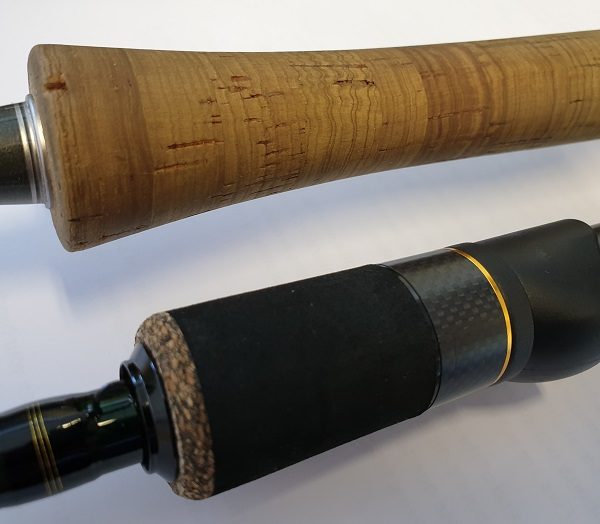
Cork vs EVA foam
Cork:
Traditionally used on most spinning rods. Cork feels comfortable in the hand even when your hands are wet. Cork is more sensitive in the hand compared to some more modern rod handle materials like EVA foam. However, quality cork is becoming harder to obtain and cork composites and substitutes are now being implemented on modern rods as an alternative. Some of these materials can offer better grip but can also be quite heavy in hand.
EVA foam:
EVA foam has several benefits over cork, EVA is a far more durable material, it’s easy to clean and wipe down and is lighter in the hand, so can reduce the overall weight of the rod. Typically seen on modern lure rods, EVA handles are very robust and durable.
We recommend picking a few rods up and seeing what feels more comfortable in hand first before making a decision.
Rod blank material
There are two main types of materials used for building fishing rods. Below we give you a quick overview of both and the advantages of both.
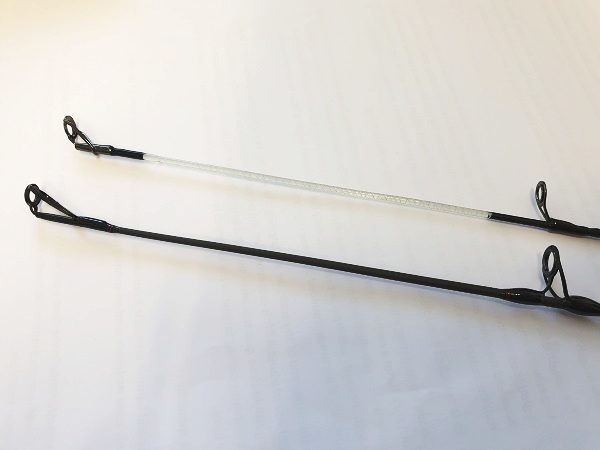
Fibreglass vs Carbon Fibre
Carbon fibre:
Most spinning rods are made from some grade of Carbon fibre. These rods provide you with a lightweight, strong and sensitive rod blank. The better the quality of carbon used, the better quality of rod is produced. Carbon can be tuned to take on various rod action characteristics.
Fibreglass:
Although fibreglass was heavily used in older rods before the introduction to carbon-based rods, fibreglass still holds a place in the rod market. Known for its overall strength and robustness, fibreglass rods still have a niche market. Their super slow action still has a place in an angler’s arsenal. Fibreglass is limited in its rod action and is also quite heavy in hand compared to modern carbon rods.
Summary
Hopefully, you’ve made it through our article and now have a better understanding of what to look for in a new spinning rod. First, figure out the criteria for your new rod and then break it down using our guide, this will tick the boxes and ensure you are armed with the right information when you come into the shop. If you need any further assistance, don’t hesitate to pick up the phone or even come in and visit us. We are more than happy to help you find the right rod.
Click here to view our full range of spinning rods!


